It is said that the number of windows in a house is equal to the number of daughters. I don’t know if it is true, but the image of silhouettes in flowing dresses passing over the bamboo floor (Ede girls wear long-sleeved dresses that cover their heels) or in the afternoons, there are women with “brown skin, bright eyes, gentle figures” sitting diligently weaving cloth by the window is so beautiful that it captivates people’s hearts. Every time a family has a daughter getting married, the house will be extended with another room for the new couple. That is what is called a long house.
The custom of the Ede people is that whenever there is a big event, they will play the knah gong in the long house, so in every family's stilt house there is a kpan chair 5 - 10 m long, even 15 m long for the gong troupe to sit and play. And only the Ede people have kpan. Elephants, kpan chairs, buffaloes, gongs, jars... are artifacts that represent the wealth and power of a family, a clan.
Not every household in the village can afford to make kpan, because it requires many costly ceremonies. And the homeowner must have gone through 60 farming seasons and have a decent amount of gongs and jars to be able to make kpan. Not everyone can do it whenever they want.
Because the forest is always considered by the people as a sacred entity that needs to be respected, when deciding to make a kpan, first there must be a small ceremony including a chicken, a jar of wine, asking permission from the Yang to go into the forest to find wood. Go from one forest to another, looking for a tree that is 2-3 arm spans long, straight, without any kind of tree or mistletoe. You must find 1-2 trees of the same size because a set of kpan chairs in the house must include 3: a large kpan for the team leader, two short ones for the sleeping place of the homeowner and for guests.
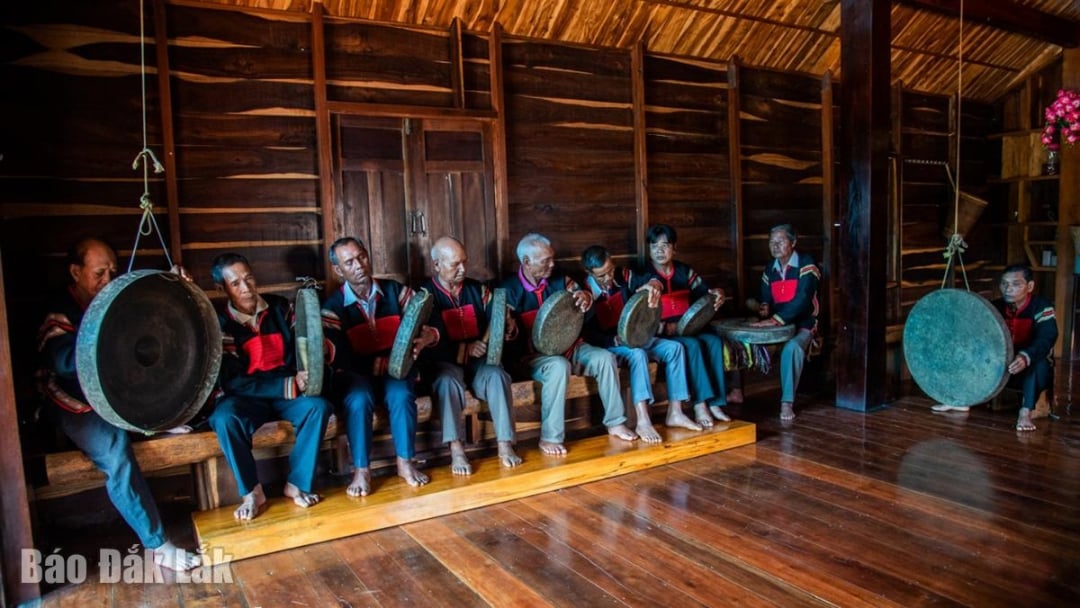 |
| Kpan is where the gong orchestra sits to perform. Photo: Huu Hung |
Once the tree is found, mark it so that others know that the tree has been chosen. On the day of deciding to cut the tree, a jar of wine and a chicken must be brought home to inform the Yangs of what they will do that day. When the group reaches the forest where the chosen tree is, the shaman must once again ask the forest god to let them cut down the tree, along with the chicken and jar of wine.
After the shaman's prayer, 7 young men carrying swords and khil will dance around the tree 7 times to drive away evil forces that prevent the chair from being made. After the procedure is completed, the tree is quickly cut down. When cutting, people must consider which direction the tree will fall so as not to break or damage the surrounding trees.
Once the tree is down, the most experienced craftsman will use a pair of gloves and bamboo sticks to calculate the length and width of the chair. A tree that is more than 10 meters long and 4 pairs of gloves in diameter can be split in half, enough to make both a kpan and a jhung. The tree is quickly peeled, chopped to the desired length, then split in half again. The skill of the Ede craftsman will be clearly shown here: With only axes and axes, without any planes or chisels, the tree trunks are transformed into flat surfaces, skillfully peeled off so that the legs and the surface of the kpan chair are a single piece. The remaining part also becomes one or two jhung chairs, only shorter, but the width, thickness and legs must still be a single piece. When encountering a large tree, it can be split into a set of three. The body and legs are one piece, that is the special thing about the Ede kpan and jhung chairs.
Once the Kpan is done, there must be a ceremony to inform the forest god that the chair will be brought back to the village. After the ceremony, the seven boys dance with the khil and sword to chase away evil forces, then everyone will put the chair on their shoulders and carry it back to the village. When they reach the yard, it cannot be brought to the floor immediately. There must be beautiful young girls dancing the grứ phiơr - flying birds dance and once again the boys dance with the swords, accompanied by girls splashing water to welcome the chair and to prevent... evil spirits from following them from the forest, also to show off their skillful khil dancing skills, being splashed with water without getting their clothes wet. After this procedure is completed, the chair can be carried to the floor. It will be placed along the length, south of the stilt house (the gong ensemble will sit facing north).
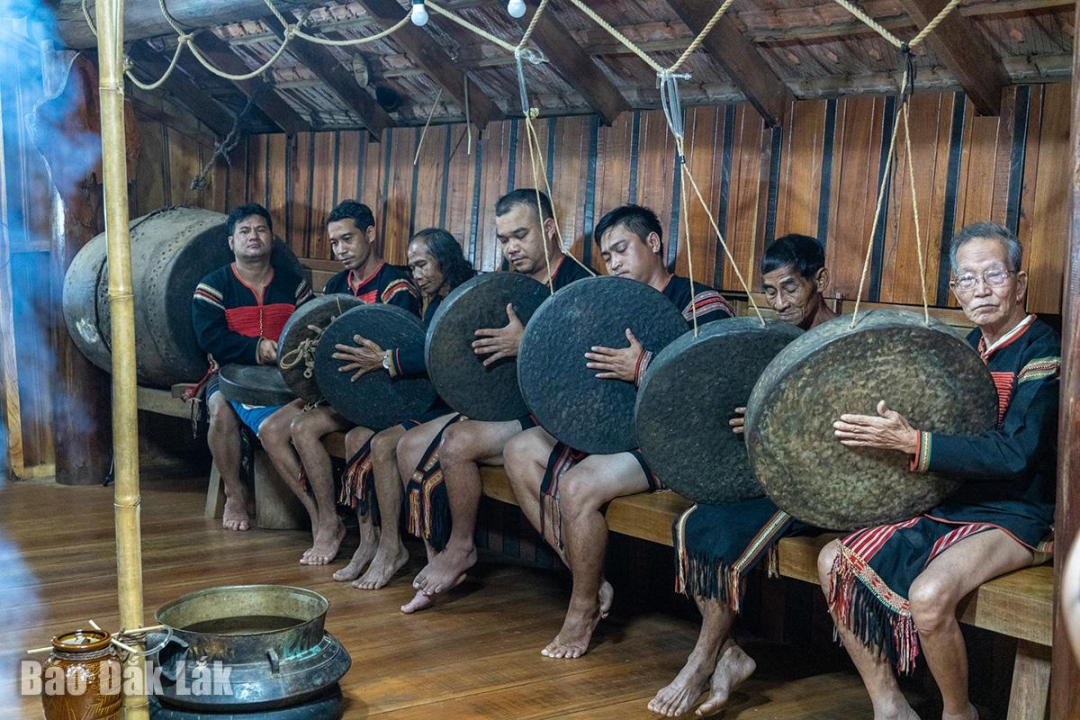 |
| Kpan is where the gong orchestra sits to perform when there is a family event. Photo: Nguyen Gia |
This is the happiest moment for the homeowner. Adults offer 1-2 buffaloes or cows, and children offer 1 buffalo and 2 pigs to the Yang to receive kpan or kpan diet. After that, the girls dance the pah kngan rong yang dance, clap their hands, and invite the gods to drink wine. Then, they pray to inform the Yang and wish good health to the homeowner and family.
The host of the wine party (gai pie) will invite guests in the form of a wine waterfall (seven girls tilt short bamboo tubes to pour water into the jar, the guests must drink it all), then invite everyone to drink mnhăm mring wine to share with the family in order of age, women first, men later.
The wine jars must be passed around without letting go until the row of jars is finished. Finally, it is time for entertainment. People will sing the narrating k'ut tune to confide in each other, the cheerful arei tune to exchange love stories or to play riddles. The wine flows freely, one jar is replaced with another. The kpan procession is one of the biggest family celebrations, and is also a common joy for the whole community.
After the day of bringing kpan home is the next step, but it will also have to follow the same steps as making kpan.
Festivals associated with community life, whether according to the agricultural calendar or the life cycle, often take place during the “year-round eating and drinking” season – spring – the Tet season of the Central Highlands people. The excited sound of the knah gong from the kpan flies up over the long stilt house roof fluttering with the blue clouds and golden sunshine “for the rabbit to listen and forget to graze, the monkey to forget to climb”... The whole village celebrates the wealth, growth, and prosperity of the family, of the community...
Linh Nga Nie Kdam
Source: https://baodaklak.vn/van-hoa-du-lich-van-hoc-nghe-thuat/202507/ke-chuyen-kpan-ede-88a1353/






![[Photo] Prime Minister Pham Minh Chinh chairs meeting to deploy overcoming consequences of storm No. 10](https://vphoto.vietnam.vn/thumb/1200x675/vietnam/resource/IMAGE/2025/10/3/544f420dcc844463898fcbef46247d16)
![[Photo] Students of Binh Minh Primary School enjoy the full moon festival, receiving the joys of childhood](https://vphoto.vietnam.vn/thumb/1200x675/vietnam/resource/IMAGE/2025/10/3/8cf8abef22fe4471be400a818912cb85)


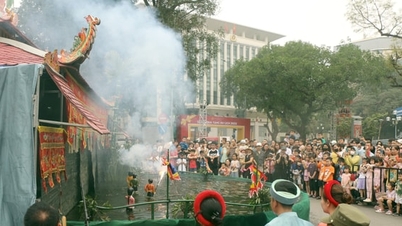


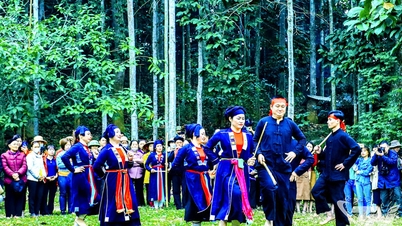

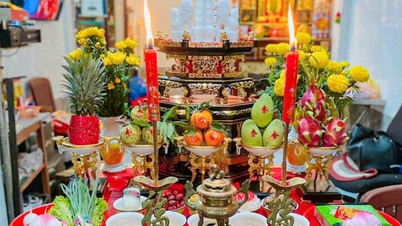

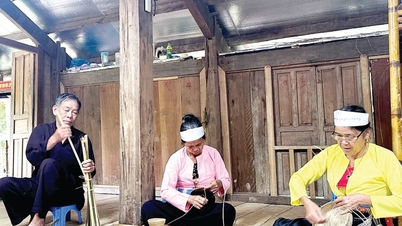

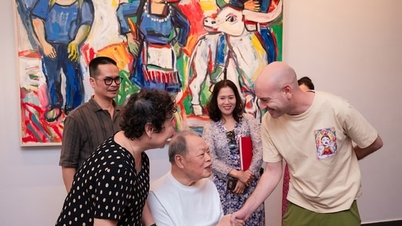


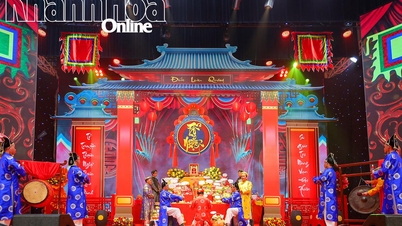









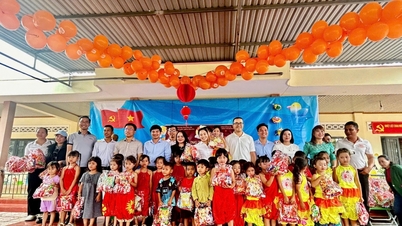


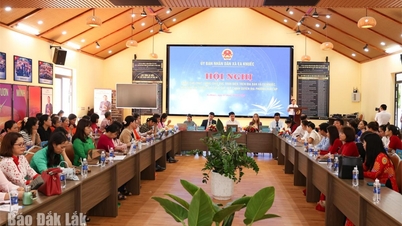



















































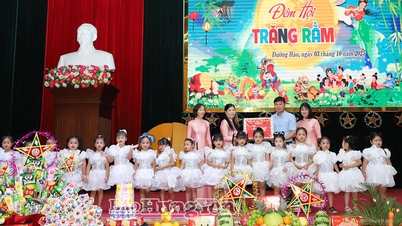

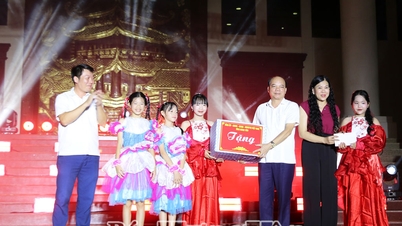
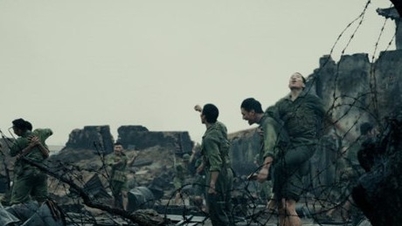



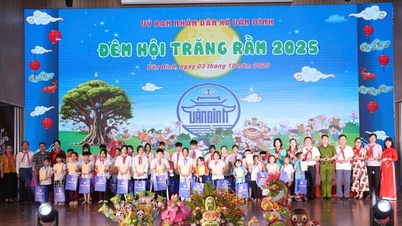











Comment (0)